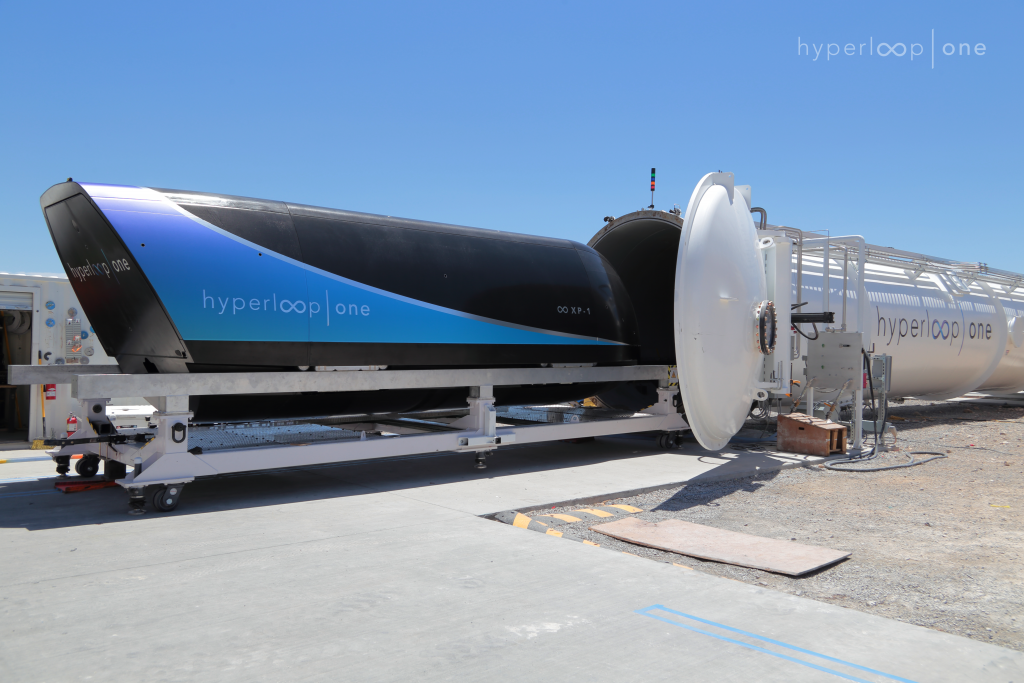In a country weary of fast trains that never depart, the possibility of a 1,000km/h link between Sydney and Melbourne is bound to be met with scepticism. But with the tech might of Elon Musk behind it, the latest plan for high-speed travel might be restoring interest. Jon Murrie reports.
It reads like a sci-fi novel. Hyperloop One is a futuristic concept involving ultra-high speed pods travelling by magnetic propulsion through vacuum tubes. It’s a combination of the Maglev trains already operating in China and the vacuum tubes that once conveyed cash through the halls of city banks.
And in the Nevada desert last month, a prototype pod on a 500m test track reached speeds above 300km/h before braking to a gradual stop. The science fiction is almost a reality.
“We’ve proven that our technology works, and we’re now ready to enter into discussions with partners, customers and governments around the world about the full commercialisation of our Hyperloop technology,” said Hyperloop One CEO Rob Lloyd.

“We’re excited about the prospects and the reception we’ve received from governments around the world to help solve their mass transportation and infrastructure challenges.”
In the case of Australia, this means a serious look at the Sydney-Melbourne corridor and other nearby cities like Newcastle and Canberra.
While the concept is championed at the international level by billionaire Elon Musk — the Tesla CEO who has promised to power-up South Australia with the world’s biggest lithium battery — local plans are being promoted by Hyperloop’s representative Ultraspeed Australia.
At the recent Travelport Live technology conference in Sydney, Ultraspeed Australia director Steve Artis told delegates a Hyperloop system could be running between Sydney and Melbourne by 2024, providing travel in just 56 minutes at speeds of 1,000km/h.
“Musk released his whitepaper at the end of 2013,” Artis said. “Two very smart people from Silicon Valley picked the idea up and decided to run it like a Silicon Valley start-up.
“They set about employing very smart people. We currently employ close to 300 of the smartest people in the world, from PhDs, space execs, NASA, BMW – a raft of top technology companies. And from start-up in January 2014 to 2017, we’ve actually produced a working Hyperloop.”
While it might still seem far-fetched, Artis said Hyperloop’s lower costs gave it the ability to succeed where conventional rail proposals had failed.
Capital costs would be about 20% less than regular rail, and operating costs 60% lower because of the low-friction environment, he said. The total cost would be about $36 billion between Sydney and Melbourne, compared to about $55 billion for past high-speed rail plans.
Currently in a pre-feasibility phase, Artis said he expected an Australian business case to be finalised in coming months and that an operational system could be running in seven years. Pods would carry about 30 to 40 people each in business class style, while freight could be carried in the equivalent of a conventional cargo container.
As for the ride, Artis said despite dizzying speeds the system was unlikely to induce sickness.
“It’s going to feel like being in an aircraft, without a window or a view,” he said. “G-force control is so accurate and so available these days that it won’t be any worse than a 737 on take-off or, at worst, a 777 on take-off.”
And despite the multi-billion dollar price tag, Artis suggested fares would give even discount airlines a real fright.
“I’m Canberra based, so I use the Murrays bus for $35, Sydney to Canberra,” Artis said. “They run 16 services a day and it takes three and a half hours. We’ll do the same trip in 15 minutes for $35.”


